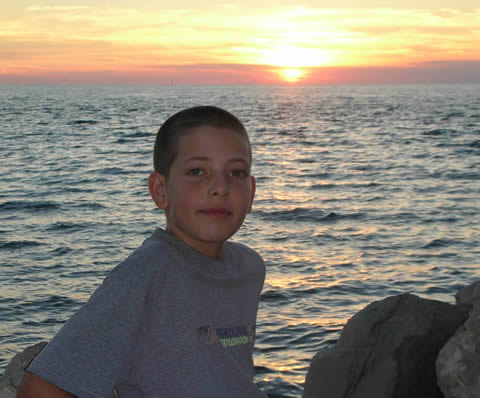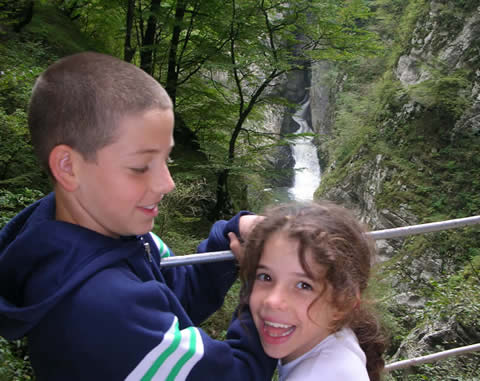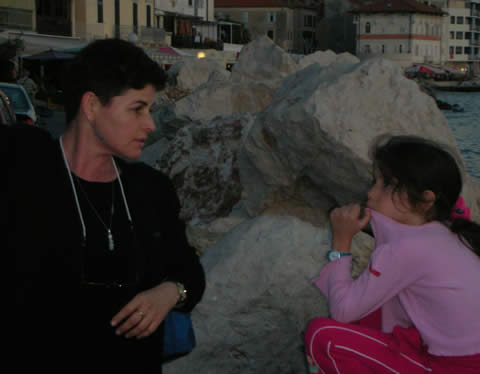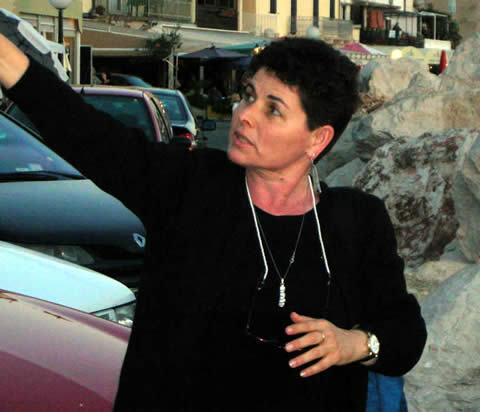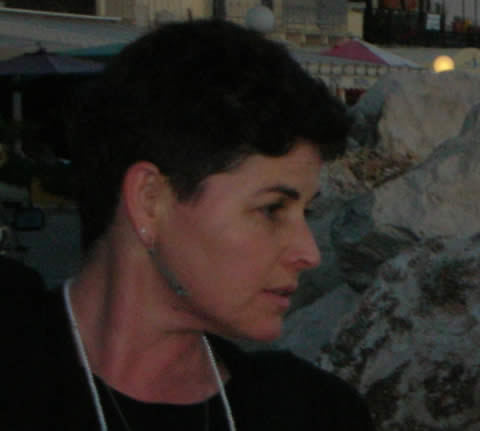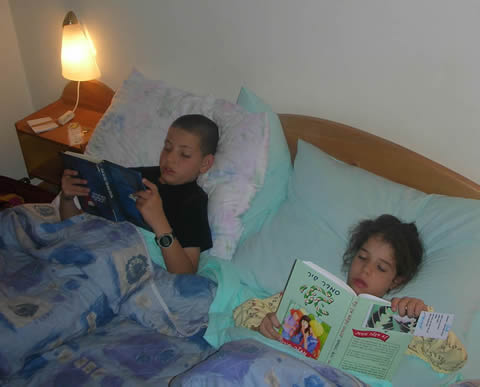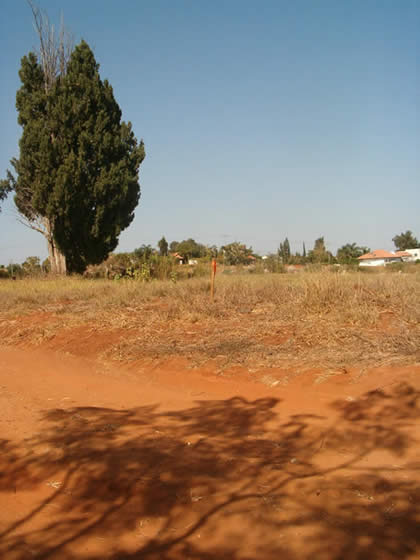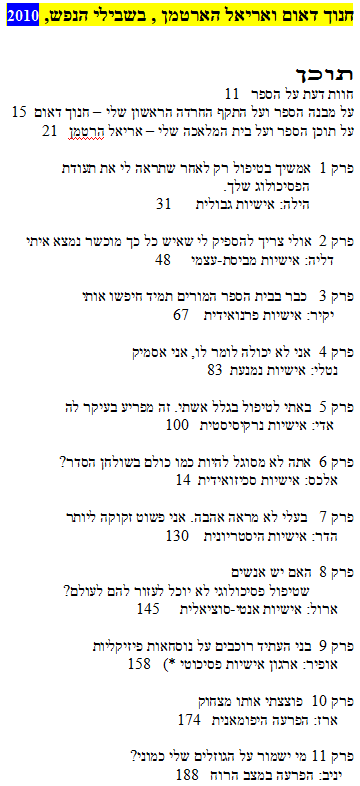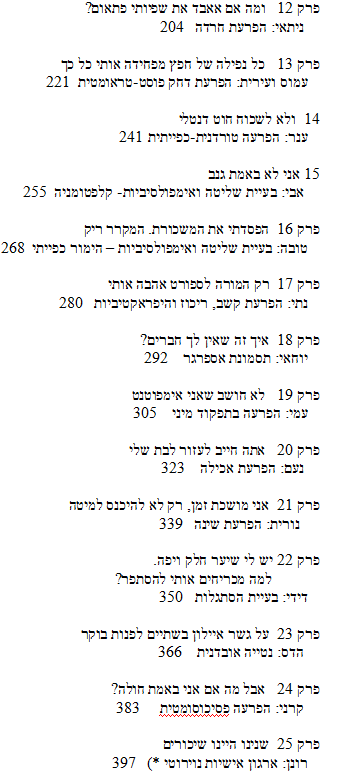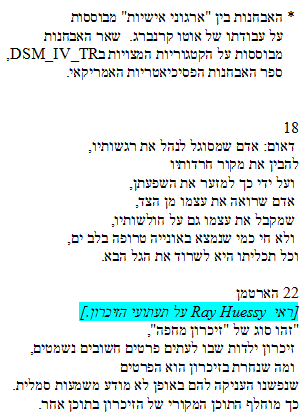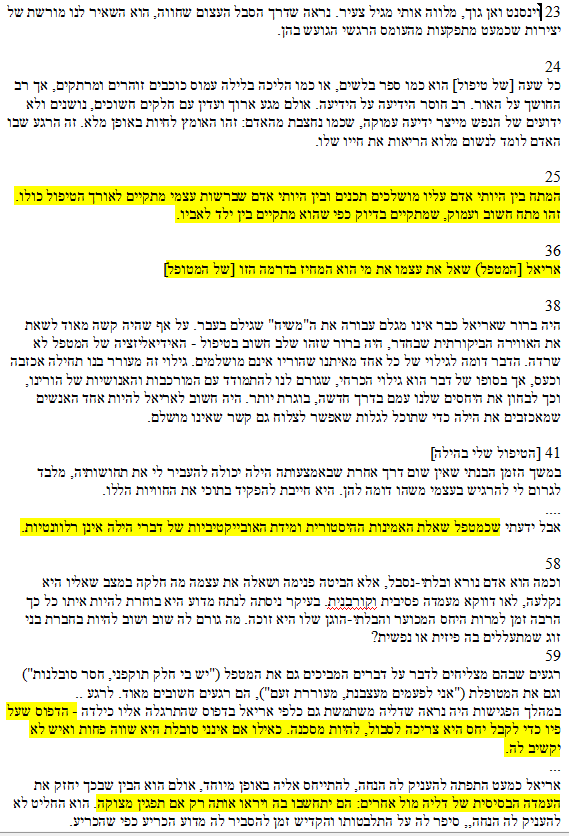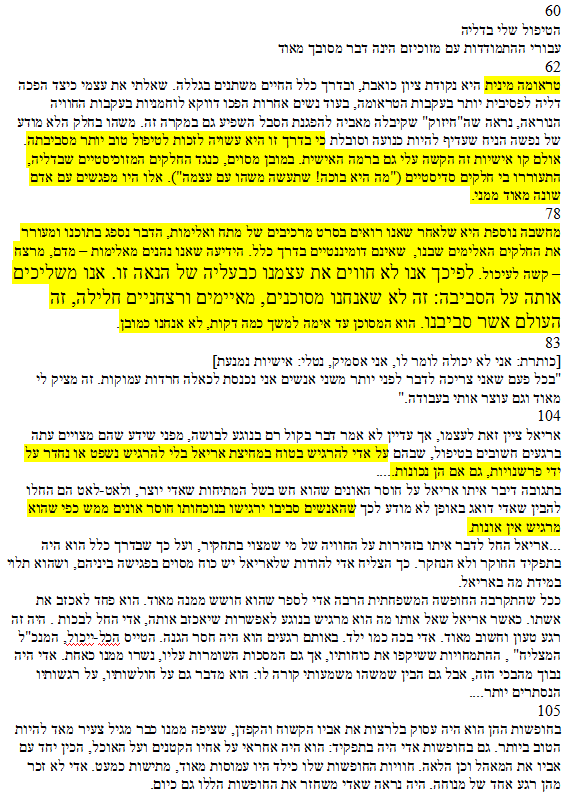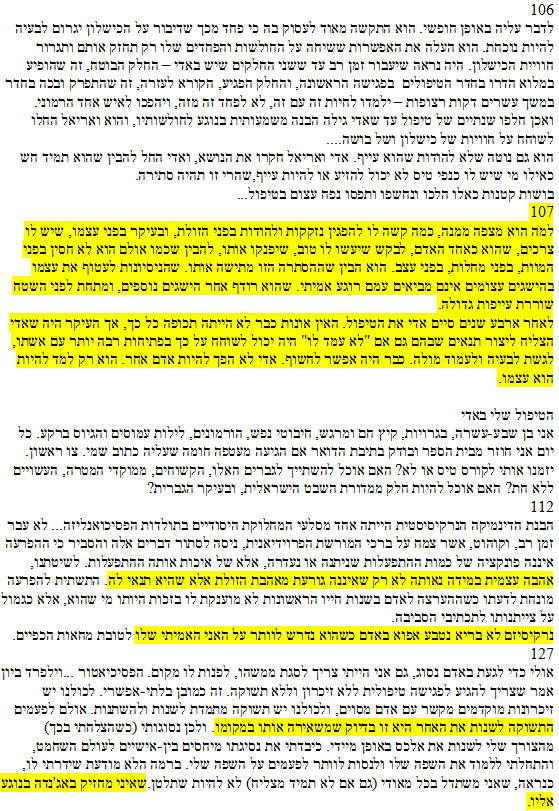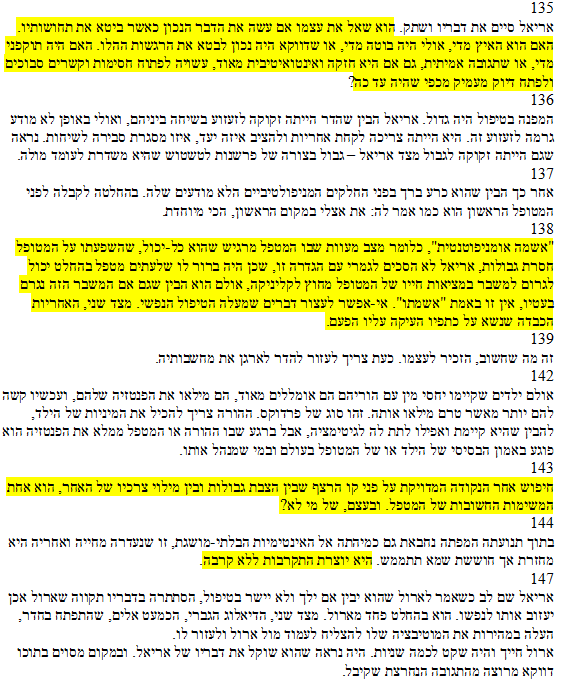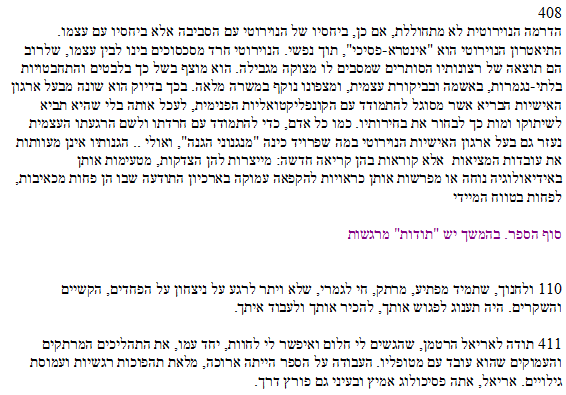|
Back to Overview of all sculptures in the fourfold library of "InteGRATion into GRATeFULLness"
![]()
InteGRATion into
GRATeFULLness
Nourishment from Others
interspersed with my questions, observations or experiences,
juxtaposed with images, not necessarily connected to the text.
2007_10_28-30
Focusing by Eugene T. Gendlin 1978
Most important: Gendlin's term of "The Felt Sense"
Fourth Page |
| Chapter Nine If you can't make anything shift The body shift most often happens Delibererate Letting-Go p.103
Letting the body really shift Learn to let your body take more of a shift.
When the handle fits but then you are stuck
Using Imagery Anyone can form an everyday image, even with
open eyes.
p.107 "What would it feel like, in my body,
if this difficulty got resolved?" p.108
p.109 We don't listen to our bodies enough. Ask, wait, and let your body reply.
|
The sea for a change,
|

The long-long-long lasting effect of water-dripping: stalagmites and stalactites in a cave, which the family visited
| Part III People helping each other Chapter Ten Finding Richness in Others p.116
p.118 [Continuation of the Listening Manual on a later page -where?]
|
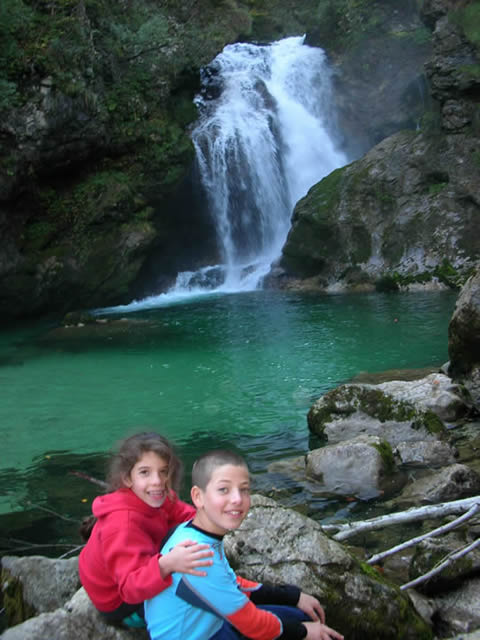 |

Ra'ayah and Ayelet walk along a village
street. No water here? Oh yes, there is!,
the plants on the right would not have grown and the shirts on the rope would
be dirty,
had there not been water around!
| Focusing and Society
p.153
In the most recent years [1978!]
A person's experience cannot be figured out by others, When it was her turn to say a little about a problem I obeyed the rules of good listening and said just that: But couldn' t one argue that this woman's experience
fits a common pattern? p.159 p.160
|
Rocks like in the desert, but in the middle of this town
Flowers in non-desert land
|
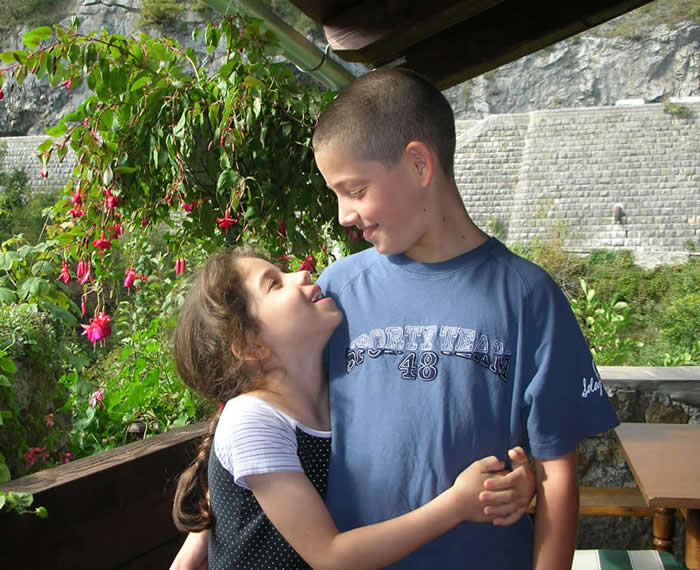
This is the end of my excerpts from Eugene Gendlin's
"Focusing"
and the end of the documentation of two wonderful water-trips,
with Micha and Ra'ayah, Arnon and Ayelet
and with grandma, either physically or virtually.
Appendix:
| Somebody who has learnt from Eugene Gendlin Stories
about Focusing Partnerships
|
A
Focusing Partnership Program "I am tremendously happy with the program. It seems like a complete success and very well implemented. I have found two focusing partners." Many people all over the country have a focusing
partnership. Most people use the time to work on their main concerns
that day, Your partner offers no advice, no judgments, no comments.
Our partnership program is open to anyone with
experience or training in Focusing partnership.
|
| While
working on the "Felt Sense" a year ago, I once was scared
of an interaction: A couple - friends - were about to come all the way to Arad to be supported by me. Wasn't I determined to refrain from all relationship support or any other "helping"? I turned to Deity and got this answer: This is your opportunity today to train "The Felt Sense"! You will learn to integrate "Sentience" and "Awareness". Do not teach what you learnt, but have not yet trained in, but let every response be a reverberation from your body. This is how you will reach the 'Sentience' of their bodies!
Consciousness in Body
"... And all of this,
|
"Trees have sentient awareness,
feelings"
My own tree, my Pekan-walnut tree..
|
June 2010: I'm learning more about "Trauma"
|
Judith Herman, Trauma and Recovery, 1992, 1
|
and also "Be-shvilee ha-nefesh"
("Mind the Road"), by Hanoch Daum and Ariel Hartman, 2010
|
66 96 Chapter 5 Child Abuse A HEALING RELATIONSHIP 155 190 Having come to terms with the traumatic past, the survivor faces the task of creating a future.She has mourned the old self that the trauma destroyed; now she must develop a new self. now she must develop new relatonships; now she must find anew a sustaining faith. 197 Helplessness and isolation are the core experiences of psychological trauma. Empowerment and reconnection are the core experiences of recovery. 199 It bears repeating that the survivor is free to examine aspects of her own personality or behavior that rendered her vulnerable to exploitation only after it has been clearly established that the perpetrator alone is responsible for the crime. A frank exploration of the traumatized person's weaknesses and mistakes can be undertaken only in an environment that protects against shaming and harsh judgment. 202 (chapter Reconciling with Oneself) Her task now is to become the person she wants to be. In the process she draws upon those aspects of herself that she most values from the time before the trauma, from the experience of the trauma itself, and from the period of recovery. Integrating all of these elements, she creates a new self, both ideally and in actuality. 207 FINDING A SURVIVOR MISSION 209 Sarah Buel, once abattered woman and now a district attorney in charge of domestic violence prosecutions, destribes the central importance of her own story as a gift to others: "I want women to have some sense of hope, because I can just remember how terrifying it was not to have any hope - the days I felt there was no way out. I feel very much like that's part of my mission, part of why God didn't allow me to die in that marriage, so that I could talk openly and publicly - and it's taken me so many years to be able to do it - about having been battered." Although giving to others is the essence of the survivor mission, those who practice it recognize that they do so for their own healing. |
Fourth Page |
to
former source of "Nourishment from Others"  to
next source of "Nourishment from Others"
to
next source of "Nourishment from Others"

